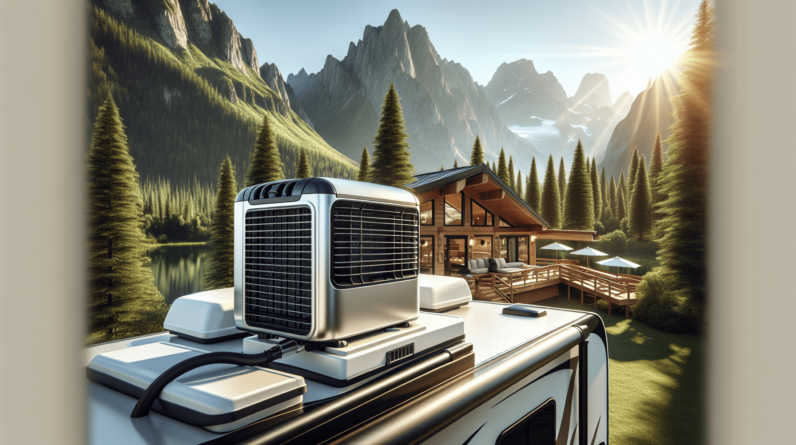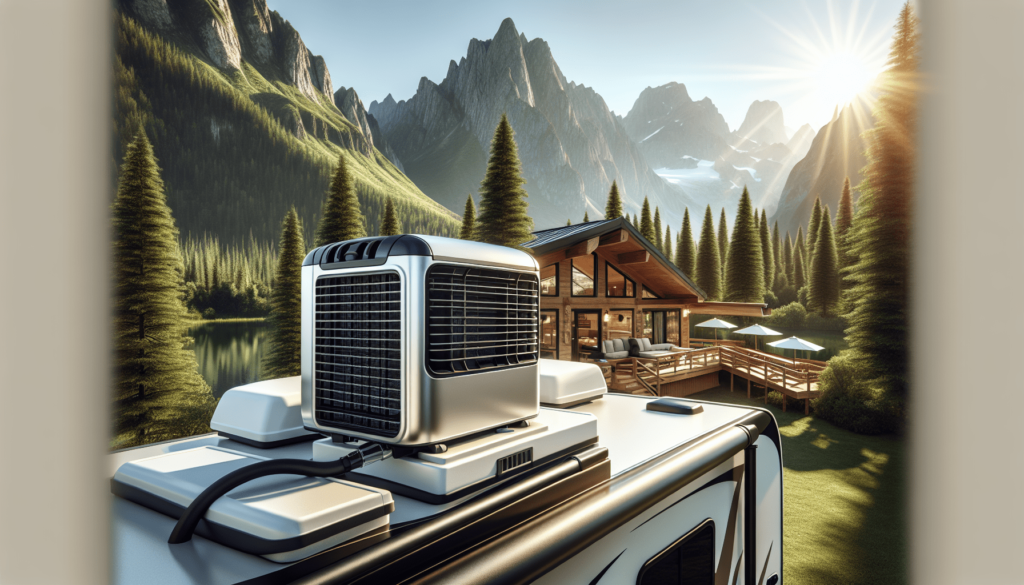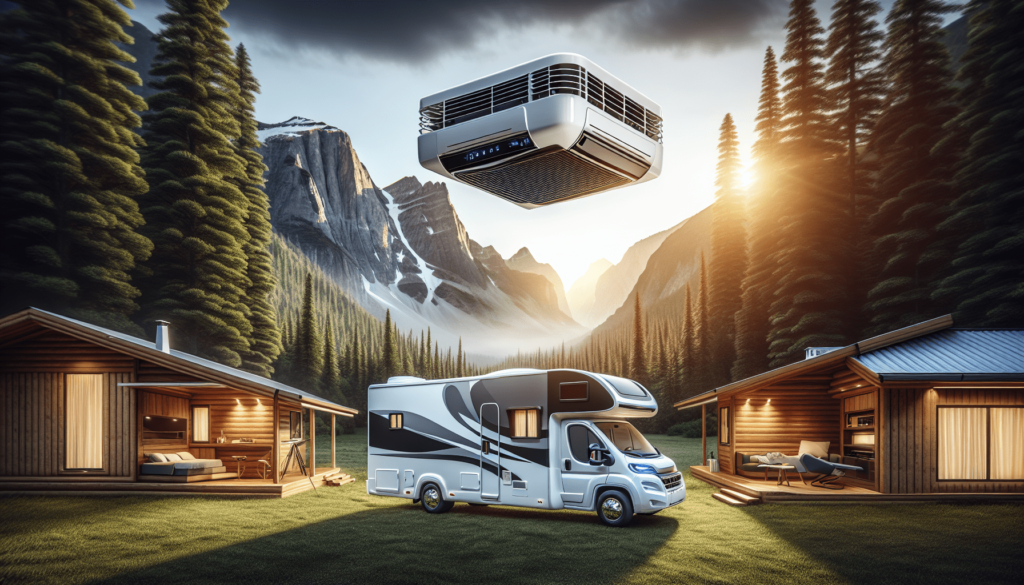

Have you ever thought about how essential comfort is during your road trips or camping adventures? If you love the great outdoors but still appreciate the luxury of a cool breeze on a hot day, an RV air conditioner might be just what you need to make your travels more enjoyable. Let’s look at everything you need to know about RV air conditioners, from types to installation and maintenance.
Understanding RV Air Conditioners
An RV air conditioner isn’t just a luxury; it can be a necessity depending on where your travels take you. However, the first step in understanding how to best equip your home on wheels is knowing how these systems function and the options available.
What Is an RV Air Conditioner?
An RV air conditioner is a compact climate control unit designed specifically for recreational vehicles. Unlike central air conditioning units found in homes, these models are built to function in the unique environment that an RV provides, focusing on both cooling efficiency and power consumption.
Types of RV Air Conditioners
When looking to install an air conditioning unit in your RV, it’s crucial to understand the different types available. Here’s a breakdown of the most common types:
| Type | Description | Pros | Cons |
|---|---|---|---|
| Rooftop Air Conditioner | Mounted on the roof of the RV; contains all components in one unit. | Space-saving and efficient for small areas. | Can be difficult to install and maintain. |
| Portable Air Conditioner | Standalone units that can be moved around inside the RV. | No permanent installation needed; can provide additional cooling. | Takes up valuable floor space; often less efficient. |
| Mini-Split System | Consists of an outdoor compressor and an indoor air-handling unit. | Often quieter and more energy-efficient; allows for zoning. | More expensive and requires professional installation. |
There’s no one-size-fits-all answer regarding which type is best for you, as it depends on your travel habits and the size of your RV.
Factors to Consider When Choosing an RV Air Conditioner
Selecting the right RV air conditioner means taking several factors into account. Here’s a look at a few important things you should watch for:
- Size of Your RV: The cooling capacity of an air conditioner is measured in BTUs (British Thermal Units). A typical RV air conditioner ranges from 13,000 to 15,000 BTU, but you may need more for larger models.
- Power Source: Consider whether your RV operates primarily on electricity, propane, or a combination of both. Make sure the air conditioner you choose is compatible with your power setup.
- Climate: If you travel frequently to hotter areas, you might want a more powerful unit or even two units for more effective cooling.
Installation of an RV Air Conditioner
Installing an air conditioning unit is often one of the more daunting tasks when you’re managing the comfort of your RV. Although it can be done by the average DIYer, it’s essential to ensure you’re equipped with the right information and tools.
DIY Vs. Professional Installation
While some folks might prefer to install the air conditioner themselves, there are benefits to hiring a professional, especially if you lack experience with electrical systems or roofing work.
- DIY Installation: Offers a sense of accomplishment and saves money, but requires physical tools, knowledge, and safety precautions.
- Professional Installation: Often costs more but guarantees that the job is done correctly. If you’re unsure or inexperienced, this might be the best option.
Steps for Installing a Rooftop Air Conditioner
If you’re going the DIY route, here’s a general step-by-step guide for installing a rooftop air conditioner:
- Preparation: Before anything else, you’ll want to gather necessary tools, including a screwdriver, measuring tape, and a gasket sealing compound.
- Remove the Cover: Get onto the roof (taking safety precautions) and carefully remove the existing AC cover or access hatch.
- Size the Unit: Make sure the air conditioner fits securely in the space.
- Seal and Secure: Apply the gasket sealing compound where the unit will sit to prevent leaks. Secure the unit in place with bolts or screws.
- Electrical Connections: Connect the unit to the electric system of the RV as per the manufacturer’s instructions, ensuring that all connections are secure.
- Final Touches: Replace the cover and test the unit by turning it on to ensure everything is functioning correctly.
Maintenance of Your RV Air Conditioner
Once you’ve installed your air conditioner, maintaining it is crucial for its longevity and efficiency.
Regular Maintenance Tips
- Clean Dust Filters: Just like home units, RV air conditioners accumulate dirt and dust. Regularly cleaning or replacing the filters ensures maximum efficiency.
- Check Coils: Inspect the evaporator and condenser coils for dirt. Clean them carefully, as excessive dirt can lead to inefficient cooling.
- Inspect Seals: Check the seals around the air conditioner to make sure they are intact. Damaged seals can lead to leaks and reduced efficiency.

Troubleshooting Common Problems
Sometimes things don’t go as planned, and your RV air conditioner may encounter issues. Knowing how to troubleshoot common problems can save you time, money, and discomfort on your journey.
Air Conditioner Won’t Turn On
If your air conditioner doesn’t seem to activate, try these steps:
- Check Power Supply: Ensure your RV’s power supply is functioning correctly and that the unit is properly connected.
- Inspect the Thermostat: Make sure the thermostat is set to a temperature that engages the cooling function.
- Circuit Breaker: Check for any tripped circuit breakers and reset them if needed.
Air Conditioner Is Making Noise
An unusual noise can be alarming. Here’s how to address it:
- Inspect for Loose Parts: A rattling sound can often indicate loose components, so check inside the unit.
- Check the Fan: If the airflow seems obstructed, the fan might be hitting something it shouldn’t, and adjustments may be necessary.
Insufficient Cooling
If you find that your RV air conditioner isn’t cooling as effectively as it should be, here are some steps to follow:
- Clean the Filters and Coils: Dirty components can drastically reduce efficiency. Cleaning them can often resolve the issue.
- Ducted Airflow: If your RV uses ducted air conditioning, check the ducts for blockages that might obstruct airflow.
The Benefits of Having an RV Air Conditioner
Having an air conditioning unit in your RV can significantly enhance your travel experience. Here’s why you should consider investing in one:
Enhanced Comfort
Traveling in the summer can be sweltering, especially if you’re parked in the sun. An air conditioning unit can cool down your living space and create a comfortable environment.
Improved Sleep Quality
After a long day of exploring, you’ll likely want to relax and enjoy a good night’s sleep. A comfortable, cool atmosphere can help you rest better, ensuring you’re well-prepared for the adventures ahead.
Health Benefits
Extreme heat can pose health risks, especially for older adults and young children. Maintaining a safe and cool temperature can prevent heat-related illnesses, making it safer for you and your loved ones while on the road.


Alternatives to RV Air Conditioners
In some situations, an RV air conditioner might not be feasible. Understanding alternative cooling methods can help you stay comfortable without sacrificing your travel freedom.
Roof Ventilation Fans
Roof ventilation fans can help circulate air inside the RV, reducing heat buildup. While they won’t provide the same level of cooling as an air conditioner, they can create a more comfortable atmosphere.
Portable Fans
Using battery-operated or electric portable fans can help provide a breeze, especially when combined with open windows or roof vents.
Shade Solutions
If you’re staying at a campground, consider using awnings or tarps to create shaded areas outside your RV. This simple measure can significantly reduce the ambient temperature around your vehicle.
Conclusion
Equipping your RV with an air conditioner can transform your travel experience, providing the comfort needed to enjoy long journeys or camping excursions. Understanding the types available, how to install and maintain them, and tips for troubleshooting common issues will empower you to make the best choice for your adventures.
With so many exciting locations to explore, investing in your comfort with an RV air conditioner can significantly enhance your travels, making those hot summer days much more bearable. So, what are you waiting for? It’s time to hit the road in style and comfort!






